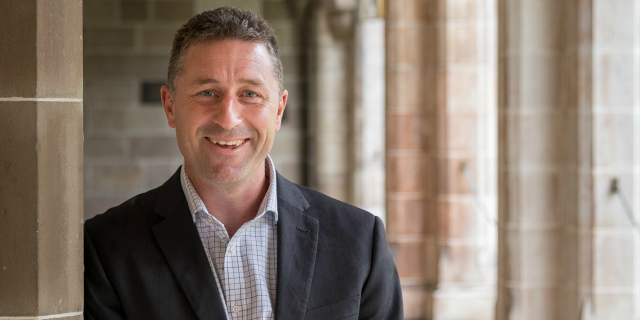Welcome from Head of Department
Meet Professor Matthew Watt
Head of Department
BSc, MSc, PhD
Established in 1862 and with a strong record of excellence, our Department's goal is to remain at the forefront of scientific research using novel and imaginative research methods to study developmental, degenerative and chronic disease.
Tell us about the newly formed Department of Anatomy and Physiology?
The Department of Anatomy and Neuroscience and the Department of Physiology have long and illustrious history, and have now come together to produce a department with a remarkable breadth and depth in research expertise that underpin our key research themes of neuroscience, metabolism and diabetes and cell biology.
The increase in critical mass of our researchers will also help position the department as a key partner for Medical Research Future Foundation (MRFF) and other large-scale grant applications relating to chronic, developmental and degenerative diseases.
The goal of the combined department is to remain at the forefront of scientific research aimed at understanding the structure and function of the human body in health and disease, while employing novel and imaginative research methods.
What are some of the synergies between the two former departments and the benefits of amalgamating them?
Both departments individually, and as a combined department, are widely recognised for innovation in teaching – both through the development of online resources and in the use of active learning approaches in face-to-face teaching. Constant review and refinement of the curriculum and educational methods ensures that we best prepare students for scientific independence as they enter graduate and postgraduate professional and research careers.
Our synergies in teaching extending beyond award programs to custom education programs focused on health professionals and industry.The former Department of Anatomy and Neuroscience had already initiated the Melbourne Academy of Surgical Anatomy in 2020, which has potential to be the largest of its kind in the southern hemisphere, underpinned by one of the largest donor programs in the country established to support the teaching and study of anatomy.
Physiology brings its considerable experience in the digital learning space. By combining expertise, it is envisioned that the Department of Anatomy and Physiology will be able to develop custom programs for health professionals and industry relevant to priority health challenges, such as cardiorespiratory and metabolic disorders.
What areas of biomedical sciences will the department focus on?
Anatomy and Physiology are two of the most fundamental areas of study in the life sciences. Anatomy refers to the internal and external structures of the body and their physical relationships. With our research in neuroscience, cell and developmental biology, and anatomical sciences, we aim to understand fundamental biological mechanisms in order to develop new treatments for injury and disease states.
Whereas Physiology refers to the study of the functions of those structures as exemplified by the human exercise and metabolic laboratories, experimental models of disease, cellular and subcellular electrophysiology and imaging, cellular and molecular laboratories, and core facilities for viral vector gene research, proteomics and the newly established metabolic phenotyping suite for small animals that exist across this large department.
These complementary areas of study in both form and function are the basis of a department that offers an integrated approach to provide a vibrant environment for undergraduate and postgraduate education, and a friendly and supportive intellectual community to encourage development of early career researchers.
Explain your research and inspires you about your work?
I joined the School of Biomedical Sciences in 2018. Now, I head the Department and lead a research team (Watt laboratory: Metabolism and Diabetes) that seeks to identify how defects of lipid metabolism and inter-tissue communication cause obesity-related disorders, such as type 2 diabetes and non-alcoholic fatty liver disease. We use this information to uncover novel targets that can be transitioned to clinical therapeutics. I draw my inspiration from a few places: seeing the development of our early career researchers and successes of all our staff, seeing a well-conceived plan through to completion and making new discoveries.
Why is the School – and the Biomedical Precinct – a great place to study and work?
The breadth of resources and skills that spans from basic research to clinical practice is world class. So many great minds and a genuine desire for collaboration.
Broadly speaking, how would you describe the current era of biomedicine and what lies ahead for your field?
With the rapid development of, and access to, sensitive and high-throughput technologies, almost any researcher can now dive deeply into understanding the cellular and molecular bases of biological processes and disease pathogenesis. The challenge now is to harness this advance in technology by coordinating multi-disciplinary research programs to answer important biological questions and address unmet clinical needs. And the future for our field – it’s bright and exciting. There still isn’t an approved therapy for non-alcoholic steatohepatitis (NASH) and many researchers and pharmaceutical companies are pouring time and money into attacking this problem from multiple fronts. I think there will be some new tools for NASH treatment in the next five years.
What advice would you give your younger self?
Two pieces of advice that might sound contradictory: (1) Don’t be afraid to pursue that big new idea and (2) Slow down, take a few extra moments to think deeply about your data before plunging head first into that next series of experiments.
